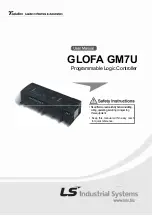
- 39 -
LANGER
EMV-Technik
DE-01728 Bannewitz
[email protected]
www.langer-emv.de
E1
The field intensity of an electric field source can be adjusted at the SGZ 21's "Intensity" controller (Figure 2).
If the intensity is set very high, the electric field of the field source spreads over a larger area of the module
than if the intensity is set to a lower value. The measurement process has to be adjusted with the
"Intensity" controller to exactly pinpoint small sensitive weak points. Even very small sensitive points can
then be precisely localised. Should this adjustment prove insufficient, the PULSE SHAPE toggle switch
(Figure 2) can be changed over to "wide pulse" so as to attenuate the interference effect. The intensity may
then have to be slightly increased again if necessary.
5.3
Monitoring of logic signals from the device under test
The device under test usually provides information about malfunctions during a test. Malfunctions may not
be sufficient to assess internal interference processes. Characteristic logic signals from the module have to
be monitored to obtain more information about the device under test, such as reset, chip select, watchdog
or any other life signs. The E1 offers the possibility of indicating signal states on the SGZ 21 via the Spike
and Signal LEDs and counting them with a counter (Figure 2), using an optical probe head, the S31 sensor
(Chapter 0 Sensor) and optical fibre.
Furthermore, the pulse density method (Chapter 3) can be used to monitor whether immunity levels are
exceeded in the device under test.
Test set-up:
Figure 42: Test set-up to monitor logic signals from the device under test.
Figure 42 shows the test-set-up for monitoring logic signals of the device under test. The SGZ 21 generator
outputs are connected to the module. A single-pole or two-connection can be used for the set-up. The S31
sensor is connected to the signal that is to be monitored via an adapter socket and enamelled copper wire.
The sensor output is connected to the SGZ 21's "counter input" via an optical fibre (Figure 2).
The adapter socket is stuck to a suitable location on the printed circuit board with super glue (Figure 43).
3 V to 5 V supply power, ground and signal are wired to the adapter socket connections in accordance with










































